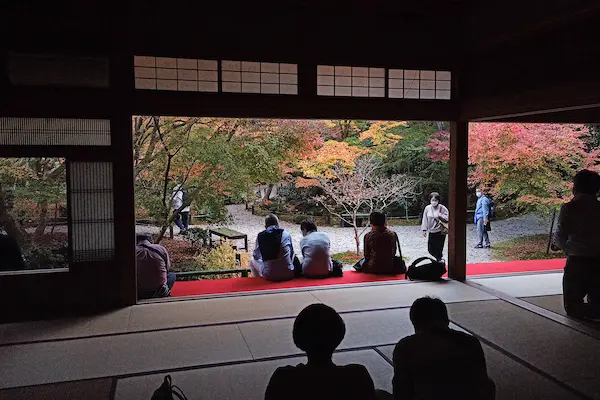Tag: Tokugawa Ieyasu
-

Konchi-in Temple, Nanzenji (金地院)
Nestled within Kyoto’s historic treasures, Konchi-in Temple, a sub-temple of Nanzenji, is a haven of rich history and cultural significance. Established in the early Edo period, it played a pivotal role in Tokugawa Ieyasu’s administration, earning the monk Ishin Suden the moniker “The Prime Minister in Black.” The temple boasts an Important Cultural Property, the…
-

Hokoji Temple (方広寺)
The Daibutsuden (Great Buddha Hall) built by Toyotomi Hideyoshi once stood where Hokoji Temple stands today. It is believed to have been built to replace the Great Buddha Hall in Nara, which was destroyed in a war. At that time, the temple was not called Hokoji Temple, but rather a private facility of the Toyotomi…
-

Jakkoin Temple (寂光院) in Ohara
Jakkoin Temple in Ohara is a nunnery of the Tendai sect of Buddhism. This is the temple where Kenreimonin, daughter of Taira no Kiyomori, spent the rest of her life. History of Jakkoin Temple In 594 Prince Shotoku built the temple to mourn the loss of his father, Emperor Yomei. The first abbot was Tamateru…
-

Shorenin Monzeki (青蓮院門跡)
Shorenin Monzeki is one of the three monzeki of Enryakuji Temple on Mt. Hiei (other two is Sanzen-in and Myoho-in). It is now one of the five Kyoto Monzeki of the Tendai sect. It originated from Shorenbo, a monk’s abode on Mt. Hiei, which at that time was the residence of Saicho, Ennin, and other…
-

Chion-in Temple (知恩院)
Chion-in Temple is the head temple of the Jodo sect. Chion-in Temple is where Honen, the founder of the Jodo sect, established a hermitage in 1175 and began to propagate Nembutsu (the recitation of the Nembutsu prayer). In the Edo period, Tokugawa Ieyasu, Hidetada, and Iemitsu built the present main hall, Sanmon gate, and other…
-

Eishoin Temple (栄摂院)
Nestled along the enchanting path from Konkai-komyoji Temple to Shinnyo-do Hall, Eishoin Temple beckons with its vivid vermilion-lacquered entrance gate. A hidden gem among the sub-temples of Konkai Komyoji, Eishoin was crafted in 1589 by Morikatsu Kimata, a loyal vassal of Tokugawa Ieyasu. What truly captivates visitors is the intimate autumnal spectacle of Eishoin’s garden,…
-

Enkoji Temple (圓光寺)
Enkoji Temple was originally opened by Tokugawa Ieyasu in 1601 as Enko-ji School in Fushimi, and was moved to its current location in Ichijodani in 1667. Cultural assets in the temple include a six-panel screen depicting bamboo groves by Maruyama Okyo (Important Cultural Property) and 50,000 wooden typefaces produced in the early modern period (Important…
-

Nijo Castle (二条城)
Nijo Castle was built in 1603 by Tokugawa Ieyasu to guard the Kyoto Imperial Palace and provide lodging for shoguns traveling to Kyoto. 1611 saw Toyotomi Hideyori and Tokugawa Ieyasu meeting at Nijo Castle, and the third shogun, Tokugawa Iemitsu, undertook extensive renovations for Emperor Gomizuo’s visit to the castle, including the Ninomaru Palace, which…
-

Shinsen-en (神泉苑)
Shinsen-en was a garden pond adjacent to the Daidairi (Imperial Palace) soon after the construction of the Heian-kyo Capital. But it was reduced in size during the Edo period (1603-1868) with the construction of Nijo Castle. Later it became a temple and Toji Temple manages it now. The following is an excerpt from the Shinsen-en…
-

Nanmei-in (南明院)
Nanmei-in Temple is one of the sub-temples of Tofukuji Temple and is located at the southernmost point of the Tofukuji site. In the temple’s precinct, there is the grave of Princess Asahi or Asahi Hime. She was a sister of Toyotomi Hideyoshi and regular wife of Tokugawa Ieyasu. Of course, it must have been a…